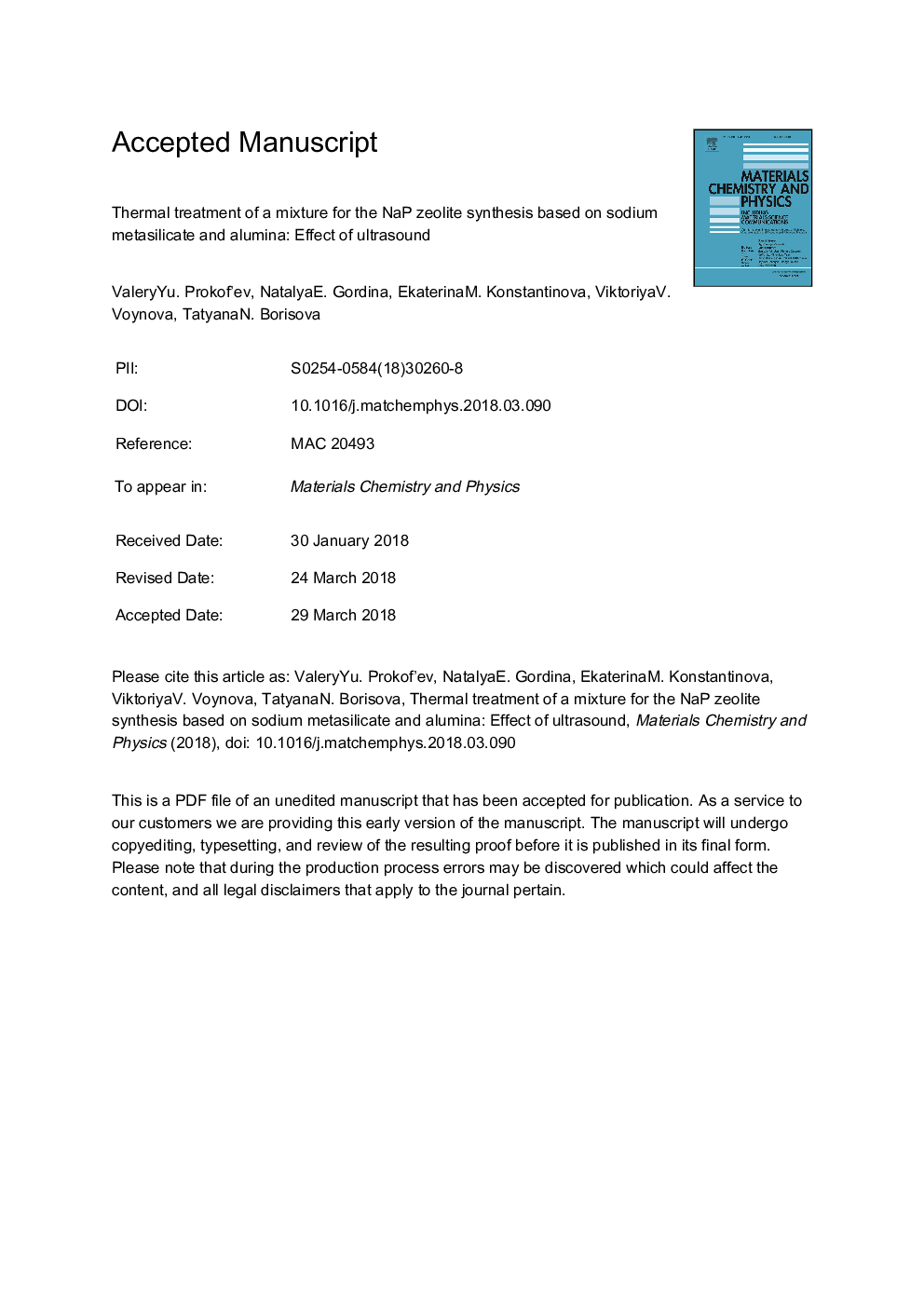| کد مقاله | کد نشریه | سال انتشار | مقاله انگلیسی | نسخه تمام متن |
|---|---|---|---|---|
| 7921477 | 1511750 | 2018 | 18 صفحه PDF | دانلود رایگان |
عنوان انگلیسی مقاله ISI
Thermal treatment of a mixture for the NaP zeolite synthesis based on sodium metasilicate and alumina: Effect of ultrasound
دانلود مقاله + سفارش ترجمه
دانلود مقاله ISI انگلیسی
رایگان برای ایرانیان
کلمات کلیدی
موضوعات مرتبط
مهندسی و علوم پایه
مهندسی مواد
مواد الکترونیکی، نوری و مغناطیسی
پیش نمایش صفحه اول مقاله

چکیده انگلیسی
The thermal behavior of a mixture of sodium metasilicate, aluminum hydroxide and silicagel has been studied. The mixture was intended for the NaP zeolite synthesis; the atomic ratio of Si:Al was 2:1. To intensify heterophase processes in suspensions, the ultrasonic treatment with a frequency of 22â¯kHz was used. Suspensions were evaporated, molded into pellets and dried. X-ray diffraction, scanning electron microscopy, and synchronous thermal analysis have been used for testing. After calcination of the samples at 700â¯Â°C, α-Na2Si2O5 and β-Na2Si2O5 as well as the X-ray amorphous phase were detected. It was shown that preliminary ultrasonic treatment allows obtaining particles with smaller particle size and coherent scattering region dimension, as well as a greater value of microdeformations for above-mentioned crystalline phases. It was demonstrated that stepwise dehydration was observed during the heating of the specimens. It was shown that preliminary ultrasonic treatment allows reducing dehydration temperatures from 3 to 10â¯Â°C. The values of the apparent activation energy and the preexponential factor have been calculated by differential method (Friedman analysis) and integral methods (Ozawa-Flynn-Wall and Kissinger-Akahira-Sunose analyzes). It was demonstrated that these analyzes yielded close values. It was established that the values of the apparent activation energy of the dehydration processes for the specimen after ultrasonic treatment are 50-100â¯kJâ¯molâ1 less than for the specimen without ultrasound. All mentioned effects have been explained by the increase in the defectiveness of a solid as a result of the impact of shock waves which are produced during cavitation at the ultrasonic treatment of the suspension.
ناشر
Database: Elsevier - ScienceDirect (ساینس دایرکت)
Journal: Materials Chemistry and Physics - Volume 213, 1 July 2018, Pages 76-82
Journal: Materials Chemistry and Physics - Volume 213, 1 July 2018, Pages 76-82
نویسندگان
ValeryYu Prokof'ev, NatalyaE. Gordina, EkaterinaM. Konstantinova, ViktoriyaV. Voynova, TatyanaN. Borisova,